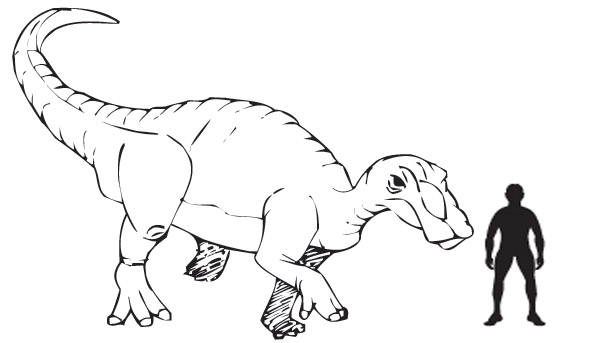Great Dinosaur Animation Coming to UK Terrestrial Television
March of the Dinosaurs, a two hour long documentary that tells the story of how some Cretaceous dinosaurs migrated hundreds of miles to exploit the rich feeding grounds of the far north, whilst other dinosaurs made the north and its freezing, dark winters their permanent home, is making its premiere on terrestrial television on Easter Saturday.
March of the Dinosaurs
The programme will be shown at 5pm on Saturday, April 23rd, clashing with the new series of Doctor Who (a deliberate ploy we think). The programmes is based on real scientific evidence that some types of dinosaurs migrated vast distances to exploit food reserves whilst others made the far north of America their permanent residence.
The story of the migration (an Edmontosaurus herd) is narrated by Stephen Fry. It is a feature length animation that shows how dinosaurs lived more than seventy million years ago in the Arctic Circle. To read about the research work that the programme is based upon: Dinosaurs of the Arctic.
Although the Arctic was warmer than it is today, much warmer in fact (during the Cretaceous there was no permanent ice at either the North or South poles), as winter sets in the high latitude means that the days become very short and in the middle of winter the land is in total darkness. Plants die back, temperatures fall dramatically and the dinosaurs face a choice stay put or migrate south.
The programme follows the story of two young dinosaurs – Scar, a young vegetarian Edmontosaurus who hatched in the spring, and Patch, a young male feathered, raptor-like Troodon. As a carnivore, Patch has fed all summer on baby Edmontosaurus. Unfortunately for him his favourite food is shortly going to be heading south.
Troodon like Patch are equipped to cope through the winter and the film follows his stay in the harsh North. It will be survival of the fittest as they fight for the remaining food in the permanent darkness. Everyone and everything is fair game. Such scenarios are scene with extant animals today, such as the Arctic Fox which enjoys a time of plenty when the migrating birds arrive and nest, but the foxes face leaner times when the birds leave.
For Scar, his summer playground becomes a winter killing field as enemies patrol the darkness. The Gorgosaurus, a nine metre long relative of Tyrannosaurus rex, is the apex predator and the programme speculates on whether this theropod was a nocturnal hunter. A new research paper has just been published that examined the orbits of dinosaur skulls for clues as to whether some meat-eating dinosaurs were nocturnal or diurnal, dromaeosaurs such as the troodontids may have been nocturnal hunters according to this new study.
The herd of Edmontosaurus must march south to avoid the worst of the winter weather, with little to eat their only option is to migrate in search of food.
An Illustration of an Edmontosaurus (Duck-billed dinosaur)

Picture credit: Everything Dinosaur
After one week the migrating herds have reached the edge of the Arctic forest but the open landscape is a hostile new world and Scar faces the new challenge of being exposed to snow.
After the Edmontosaurus have been moving south for almost a month, starvation and exhaustion are taking their toll. To Scar the herd has always meant safety, but the weaker ones begin to collapse and die around him, ending their lives as meat on the open plains.
Sounds like a fascinating documentary, one that is being shown on Easter Saturday at 5pm in the United Kingdom (London may be an hour later), but probably repeated over the next few days, a great treat for the Easter holidays.
For models and replicas of many of the dinosaurs featured in the programme, including Edmontosaurus (whilst stocks last): CollectA Deluxe Scale Prehistoric Animal Models.






Leave A Comment